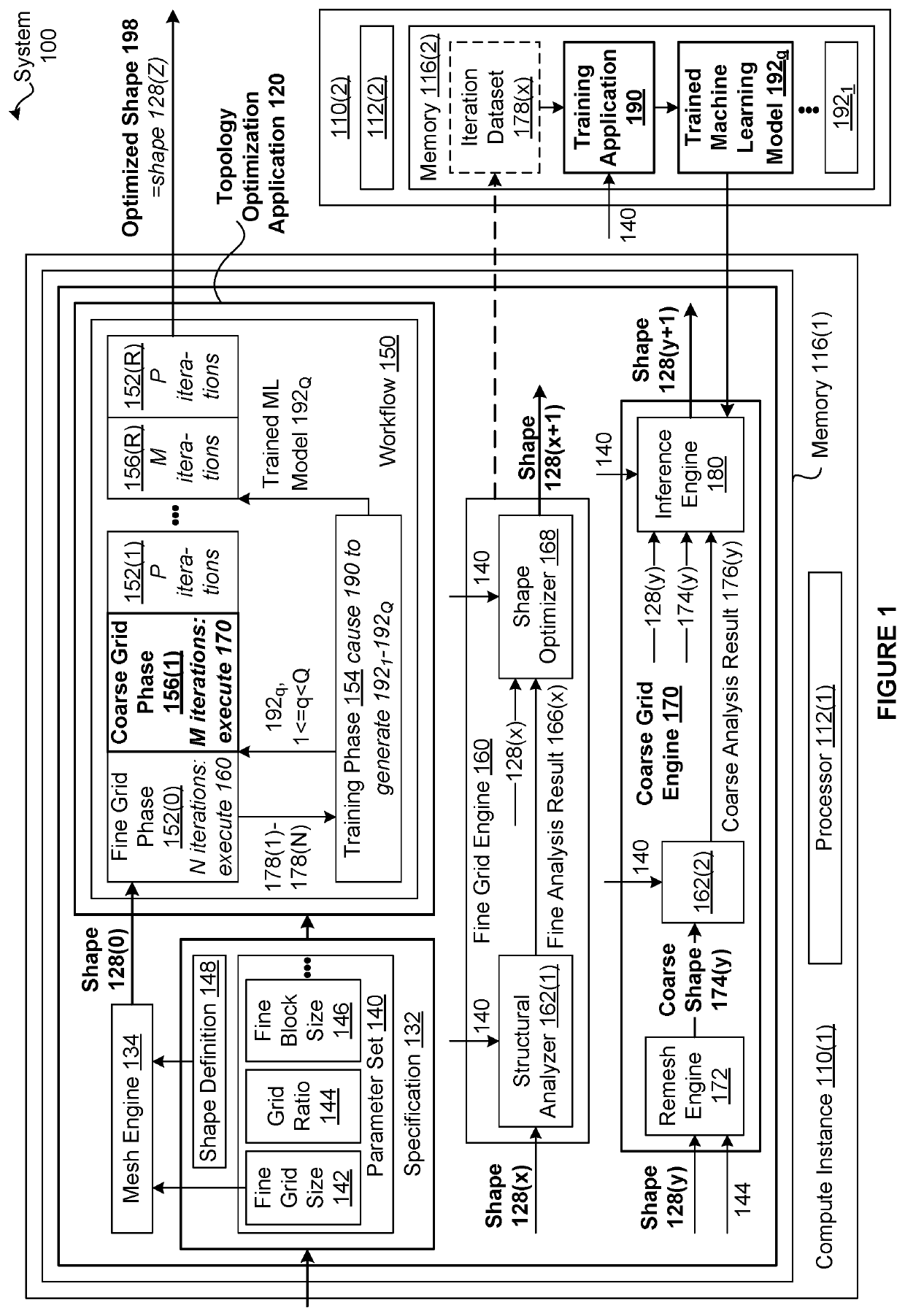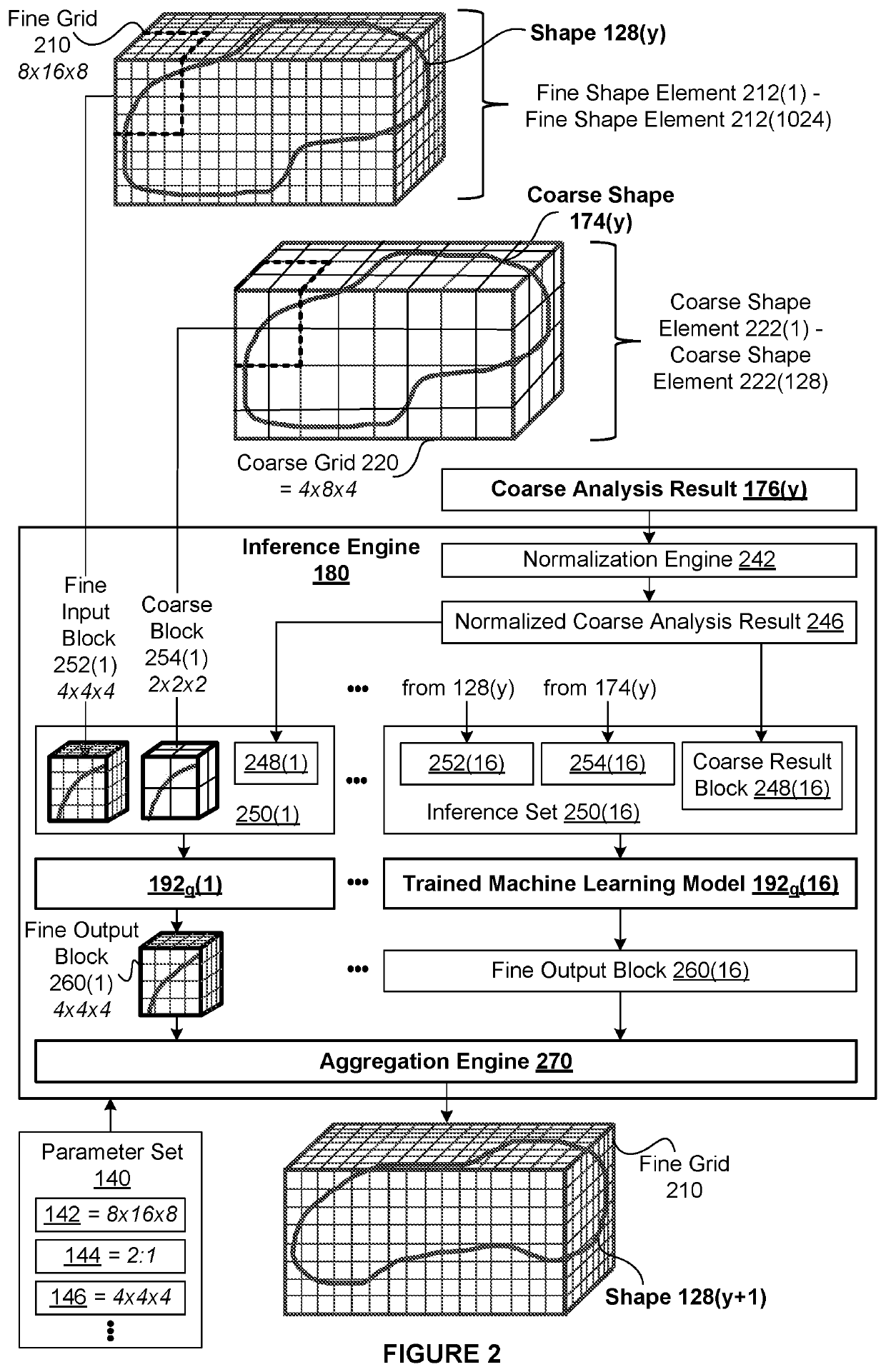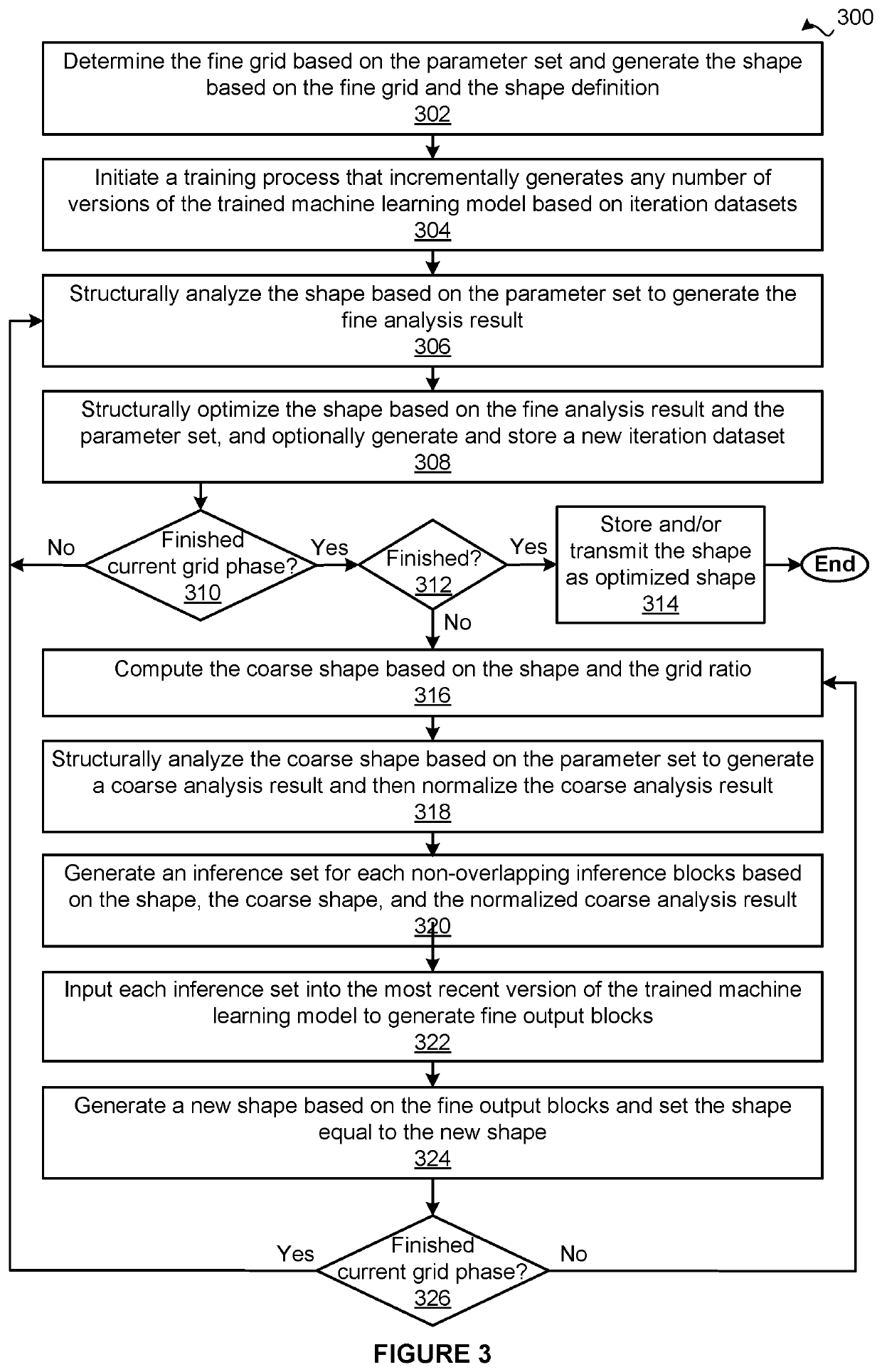Machine learning techniques for generating designs for three-dimensional objects
a three-dimensional object and machine learning technology, applied in the field of computer science and computer-aided design, can solve the problems of solving each of the topology optimization problems, computational complexity, and the inability of generative design applications to produce numerous designs that are more convergent with the design objectives than the designs, and achieve the effect of reducing the computational complexity associated with solving the topology optimization problem and the overall computational complexity
- Summary
- Abstract
- Description
- Claims
- Application Information
AI Technical Summary
Benefits of technology
Problems solved by technology
Method used
Image
Examples
Embodiment Construction
[0001]The various embodiments relate generally to computer science and computer-aided design and, more specifically, to machine learning techniques for generating designs for three-dimensional objects.
Description of the Related Art
[0002]Generative design for three-dimensional (“3D”) objects is a computer-aided design process that automatically generates designs for 3D objects that satisfy any number and type of design objectives and design constraints specified by a user. In some implementations, a generative design application specifies any number of topology optimization problems based on the design objectives and design constraints. Each problem specification includes a shape boundary and values for any number of parameters associated with the topology optimization problem. Some examples of parameters include, without limitation, material types, manufacturing methods, manufacturing constraints, load use cases, design constraints, design objectives, and completion criteria. The ge...
PUM
 Login to View More
Login to View More Abstract
Description
Claims
Application Information
 Login to View More
Login to View More - R&D
- Intellectual Property
- Life Sciences
- Materials
- Tech Scout
- Unparalleled Data Quality
- Higher Quality Content
- 60% Fewer Hallucinations
Browse by: Latest US Patents, China's latest patents, Technical Efficacy Thesaurus, Application Domain, Technology Topic, Popular Technical Reports.
© 2025 PatSnap. All rights reserved.Legal|Privacy policy|Modern Slavery Act Transparency Statement|Sitemap|About US| Contact US: help@patsnap.com



